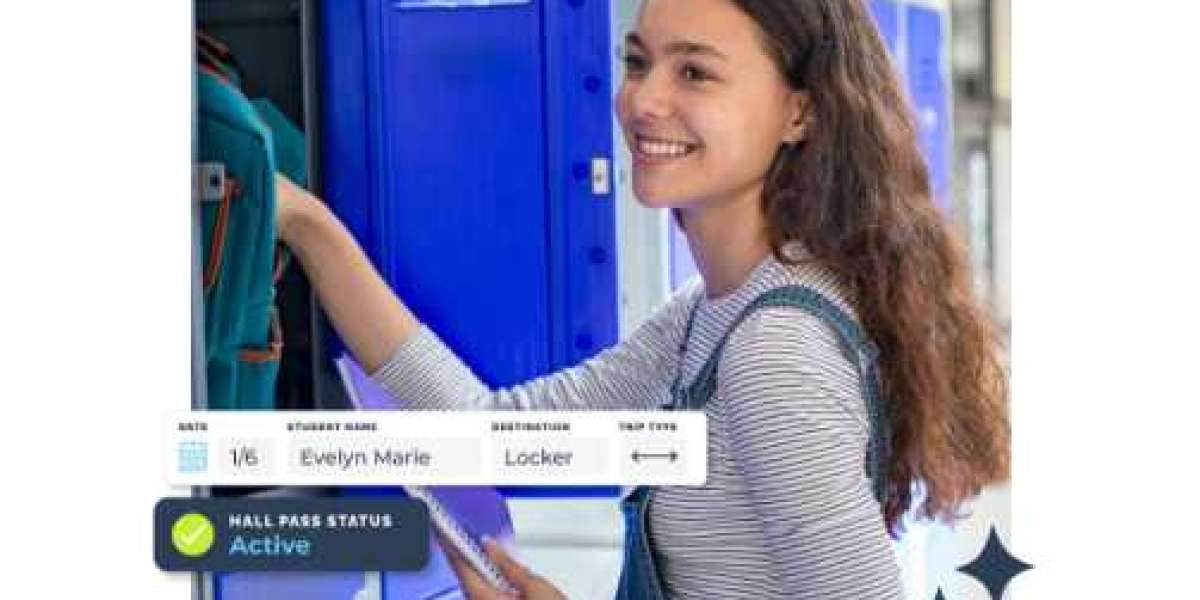One such tool that has gained popularity in recent years is the digital hall pass. Traditionally, students have been given paper hall passes to leave the classroom for various reasons—whether it's to use the restroom, visit the nurse, or go to another teacher's classroom. But with the rise of digital solutions, many schools are now turning to digital hall pass for schools as a modern, efficient alternative. In this blog, we’ll compare digital hall passes vs. paper passes and explore which option is better for schools, teachers, and students.
1. Efficiency and Tracking
One of the most significant advantages of digital hall passes for teachers is the ability to track student movement in real-time. With digital passes, teachers can immediately issue and track the time a student leaves the classroom, the reason for their absence, and when they return. This is especially helpful for maintaining a safe and organized school environment, ensuring that no student is unaccounted for.
On the other hand, paper passes often lack an efficient tracking system. Teachers must rely on manually writing the pass, which may lead to missing information such as the exact time a student left or returned. Additionally, paper passes can easily be lost or misplaced, which can cause confusion.
2. Security and Accountability
Security is a major concern in schools, and digital hall passes can enhance accountability by providing real-time updates to administrators or security personnel. Through a school messaging system or a hall pass management tool, teachers and administrators can monitor which students are out of class and where they are going. This instant information helps ensure that students are not wandering the halls without permission, providing an added layer of security.
In contrast, paper hall passes can be easily forged, lost, or used by students who shouldn’t be out of class. They don’t offer the level of monitoring and accountability that a digital system provides, which can lead to potential safety risks.
3. Environmental Impact
Another benefit of digital hall passes is their eco-friendly nature. With schools making efforts to go paperless and reduce waste, digital hall passes contribute to sustainability by eliminating the need for paper. By using mobile devices, tablets, or computers, students can access their hall pass digitally, reducing the consumption of paper and ink.
Paper hall passes, however, contribute to paper waste, and teachers often print multiple passes per day, which can add up over time. Although it's a small change, switching to digital hall passes is one step toward a more sustainable school environment.
4. Ease of Use and Convenience
Digital hall passes are incredibly convenient for both teachers and students. With a few taps or clicks, teachers can issue a hall pass, and students can carry it on their mobile devices. These passes can even be integrated with school messaging systems, allowing real-time communication with other teachers, staff, and administrators. Additionally, digital hall passes can be customized to include reasons for leaving the classroom, making it easier for teachers to monitor student behavior and ensure that the passes are being used appropriately.
Paper passes, while simple to use, are less convenient for tracking purposes. Teachers must write out each pass by hand and hand it over to the student. There’s also the hassle of having to carry the paper pass back to the teacher, risking loss or damage. In busy classrooms, this can lead to delays and added stress.
5. Integration with Other School Systems
Digital hall passes can be integrated with other systems within the school, such as attendance systems, student databases, and security systems. This integration makes it easier for school staff to monitor student activity across different departments and maintain consistent records of when and where students are. It also facilitates communication between teachers and administrators, ensuring that everyone is aware of who is out of class and why.
While paper hall passes are independent of any other systems, they don’t offer the seamless integration that digital systems can provide. Teachers must manually record information and communicate with administrators, which can sometimes lead to errors or delays.
FAQ: Digital Hall Passes vs. Paper Passes
Q1: What are digital hall passes?
Digital hall passes are electronic versions of traditional paper hall passes, allowing teachers to issue and track student movement electronically. These passes can be managed through an app or school software and are often stored on students' mobile devices, tablets, or school-issued computers.
Q2: How do digital hall passes improve school security?
Digital hall passes improve school security by providing real-time tracking of student movements. Teachers and administrators can instantly see which students are out of class, where they are going, and when they return. This system helps reduce the chances of students wandering the halls without permission and allows staff to respond quickly if needed.
Q3: What are the benefits of using a school messaging system with digital hall passes?
A school messaging system integrated with digital hall passes allows for seamless communication between teachers, staff, and administrators. Teachers can alert other staff members when a student leaves the classroom, and administrators can receive real-time updates about student movement. This enhances coordination and ensures that everyone is informed, which helps keep students safe.
Q4: Are digital hall passes easy for students to use?
Yes, digital hall passes are very easy for students to use. Once issued by the teacher, students typically carry the pass on their mobile devices or school tablets. Some systems even allow students to request a pass or select their destination directly through an app, making the process quick and user-friendly.
Q5: Can digital hall passes help reduce paper waste in schools?
Yes, one of the significant advantages of digital hall passes is that they are paperless, contributing to reducing paper waste in schools. By eliminating the need for printed paper passes, schools can make strides toward becoming more eco-friendly and reduce their environmental impact.
Q6: Can digital hall passes be used for all types of school activities?
Yes, digital hall passes can be used for a wide range of school activities, including restroom breaks, visits to the nurse’s office, or trips to other classrooms. Teachers can customize the system to include different types of passes based on the school's needs, making it versatile and adaptable.
Conclusion
While both digital hall passes for teachers and paper passes have their advantages, it’s clear that digital hall passes offer numerous benefits in terms of efficiency, security, convenience, and sustainability. Digital hall passes streamline the process, enhance real-time communication, and provide valuable tracking and reporting features that paper passes simply can’t match. As technology continues to play a larger role in education, switching to digital hall passes could be a game-changer for schools looking to improve safety and operations while reducing environmental impact.
Ultimately, the choice between digital and paper hall passes will depend on the specific needs of each school, but the advantages of digital systems are increasingly hard to ignore.














